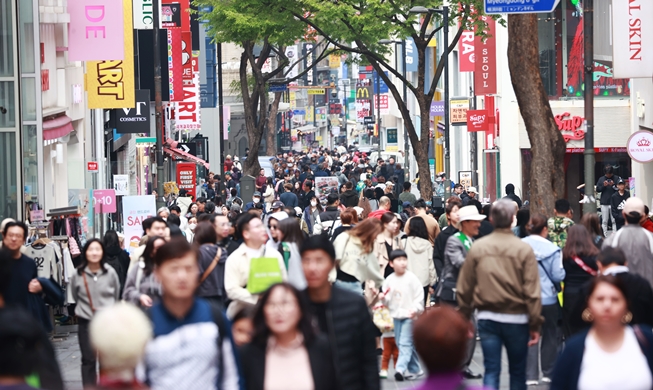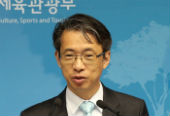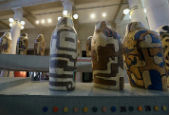-
 Korea.net's 24-hour YouTube channel
Korea.net's 24-hour YouTube channel- NEWS FOCUS
- ABOUT KOREA
- EVENTS
- RESOURCES
- GOVERNMENT
- ABOUT US
One hundred masterpieces of modern art have been on display at the gallery in Deoksugung Palace, a branch of the National Museum of Modern and Contemporary Art, Korea (MMCA), since late October last year. The exhibition features 100 modern paintings completed by 57 artists who represent the past half century of Korean history, from the 1920s to the 1970s. The gallery is receiving a growing amount of attention and is visited by an average of 3,000 spectators every day.
The exhibit gives visitors a glimpse into how modern art has evolved over the past 60 years through its four chronological sections. The first section brings attention to paintings of the '20s and '30s, largely influenced by the foreign art scene. The second section sheds light on the anti-foreign art movement aroused in the '40s and '50s due to the influence of the Korean War (1950-1953). The third section features ink and color paintings, a new modern style of art that appeared in the '50s and '60s. Finally, abstract art is introduced in the fourth section, representing the freedom of the artists as they brought to bear their individuality, personality and thoughts.
(Click here to see more of Korea.net’s coverage of the 100 painting masterpieces.)
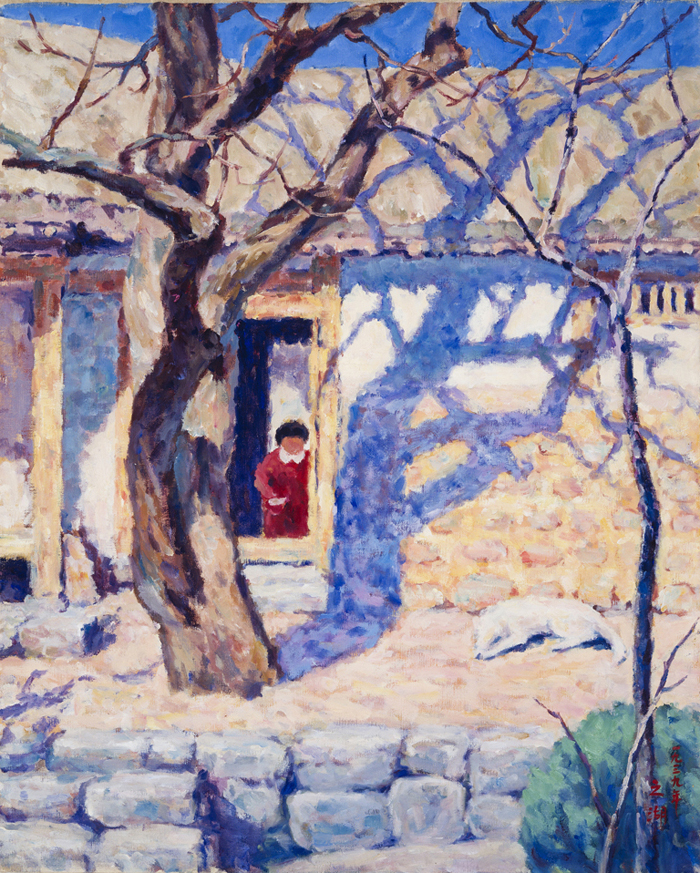
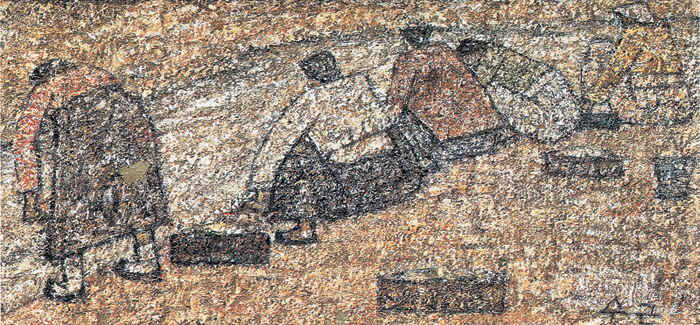
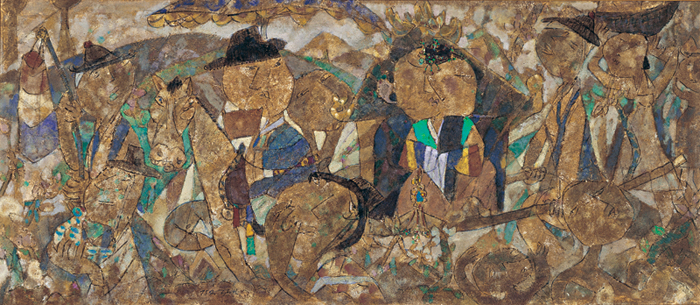
Recently, a new addition has arrived in the masterpiece collection to enliven the gallery. It is “White Bull,” painted by Lee Jung-sup (1916-1956), on loan from the Hongik University Museum. It is hung opposite Lee’s two other “Bull” paintings, which have been on display here since the beginning of the exhibition.
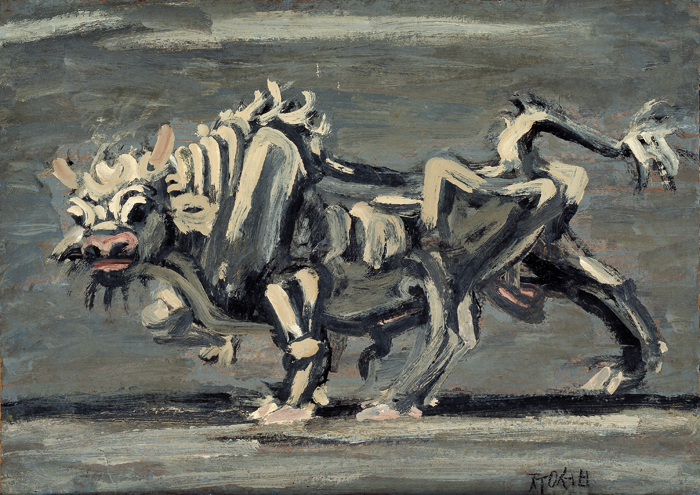
Painter Lee Jung-sup is one of the most important artists in the domestic art scene. Hailing from Pyeongannam-do, now part of North Korea, Lee came south during the Korean War with his wife and two sons. After years of struggling and poverty, his wife, originally from Japan, returned to her home country with the children. Lee was torn apart and left alone in Korea. The sorrow and pain that Lee had to go through became the inspiration for his lifelong masterpieces. A number of his paintings seem to speak of his sorrow, specifically the “Children” series, “Couple” and “Family on the Refuge.”
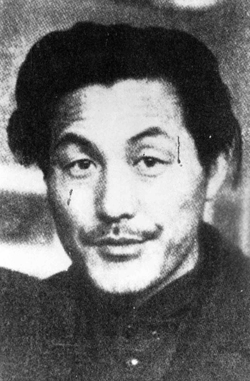 Lee is known for his use of everyday subject matter in his paintings, such as a child, a family, a bull, a crab and a lotus flower. Lee seems to not have made many attempts to utilize odd or unique subject material and he enjoyed painting what he had already painted before, sometimes portraying a few of them together on the canvas.
Lee is known for his use of everyday subject matter in his paintings, such as a child, a family, a bull, a crab and a lotus flower. Lee seems to not have made many attempts to utilize odd or unique subject material and he enjoyed painting what he had already painted before, sometimes portraying a few of them together on the canvas.
Among them are his “Bull” paintings, an iconic subject that can explain Lee’s existence. His “Bull” series can be characterized by his use of simple yet bold lines that obviously helped the animal seem powerful and energetic. Experts say that the unique style of expression originates from the artist’s keen eye. In fact, rumor even has it that Lee was accused of stealing cows during his childhood.
There are 25 of Lee’s bull paintings remaining with us today. Three of them are on display at the gallery in Deoksugung Palace. The works seem suspiciously similar to each other at first glance, but have subtle individual nuances when examined closely.
The exhibition lasts until March 30.
It is closed on Mondays. General admission is KRW 6,000.
More information can be found at the exhibition’s website: http://www.koreanpainting.kr
(All photos courtesy of the MMCA)
By Lee Seung-ah
Korea.net Staff Writer
slee27@korea.kr
The exhibit gives visitors a glimpse into how modern art has evolved over the past 60 years through its four chronological sections. The first section brings attention to paintings of the '20s and '30s, largely influenced by the foreign art scene. The second section sheds light on the anti-foreign art movement aroused in the '40s and '50s due to the influence of the Korean War (1950-1953). The third section features ink and color paintings, a new modern style of art that appeared in the '50s and '60s. Finally, abstract art is introduced in the fourth section, representing the freedom of the artists as they brought to bear their individuality, personality and thoughts.
(Click here to see more of Korea.net’s coverage of the 100 painting masterpieces.)

“A House with a Southern Prospect” by Oh Ji-ho (1939)

“Washing Place” by Park Su-geun (1954)

“Happy Day” by Choi Yeong-rim(1975)
Recently, a new addition has arrived in the masterpiece collection to enliven the gallery. It is “White Bull,” painted by Lee Jung-sup (1916-1956), on loan from the Hongik University Museum. It is hung opposite Lee’s two other “Bull” paintings, which have been on display here since the beginning of the exhibition.

”White Bull” by Lee Jung-sup. Presumed to have been painted in 1954.
Painter Lee Jung-sup is one of the most important artists in the domestic art scene. Hailing from Pyeongannam-do, now part of North Korea, Lee came south during the Korean War with his wife and two sons. After years of struggling and poverty, his wife, originally from Japan, returned to her home country with the children. Lee was torn apart and left alone in Korea. The sorrow and pain that Lee had to go through became the inspiration for his lifelong masterpieces. A number of his paintings seem to speak of his sorrow, specifically the “Children” series, “Couple” and “Family on the Refuge.”

Painter Lee Jung-sup (photo: Yonhap News)
Among them are his “Bull” paintings, an iconic subject that can explain Lee’s existence. His “Bull” series can be characterized by his use of simple yet bold lines that obviously helped the animal seem powerful and energetic. Experts say that the unique style of expression originates from the artist’s keen eye. In fact, rumor even has it that Lee was accused of stealing cows during his childhood.
There are 25 of Lee’s bull paintings remaining with us today. Three of them are on display at the gallery in Deoksugung Palace. The works seem suspiciously similar to each other at first glance, but have subtle individual nuances when examined closely.
The exhibition lasts until March 30.
It is closed on Mondays. General admission is KRW 6,000.
More information can be found at the exhibition’s website: http://www.koreanpainting.kr
(All photos courtesy of the MMCA)
By Lee Seung-ah
Korea.net Staff Writer
slee27@korea.kr
Most popular
- First hearing-impaired K-pop act hopes for 'barrier-free world'
- 'Mad Max' director impressed by 'cinema-literate' Korean viewers
- Romanian presidential couple visits national cemetery
- 'Korean mythology is just as wonderful as Greek and Roman'
- Hit drama 'Beef' wins awards from 3 major Hollywood guilds




